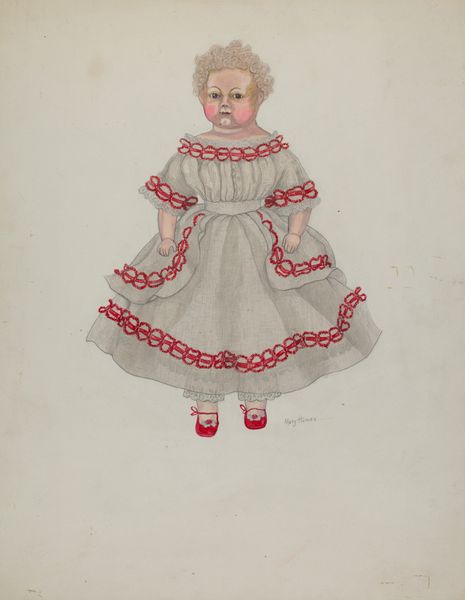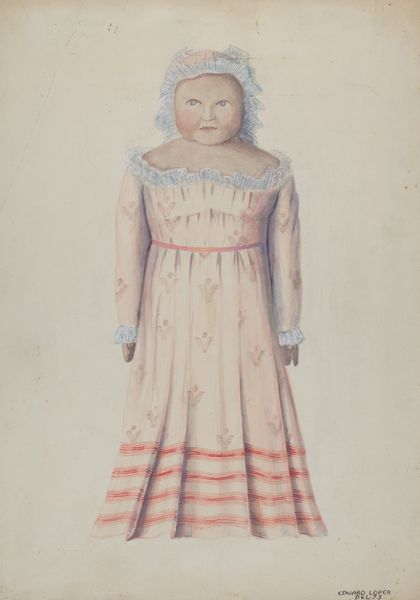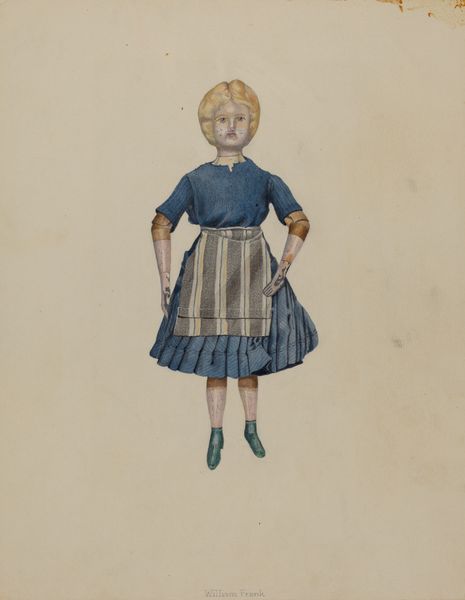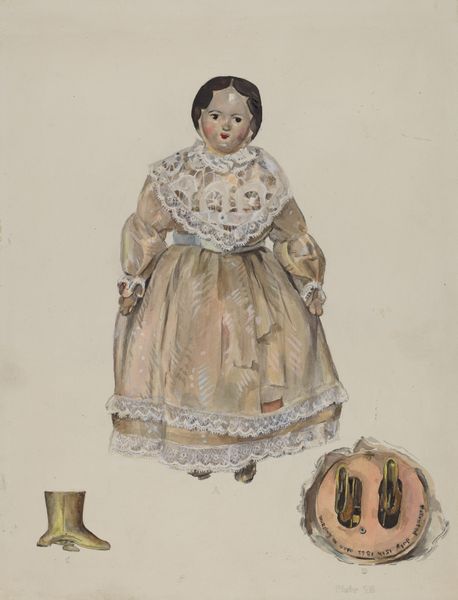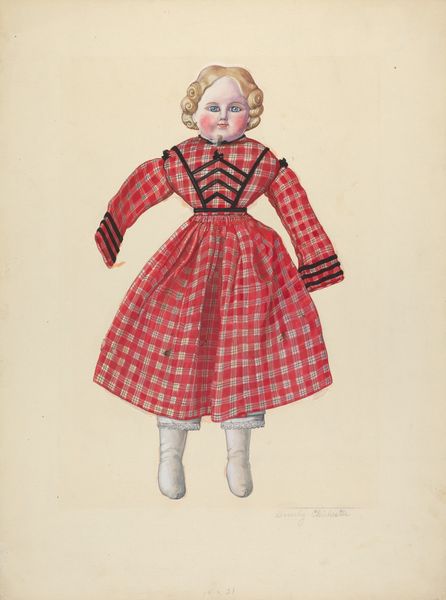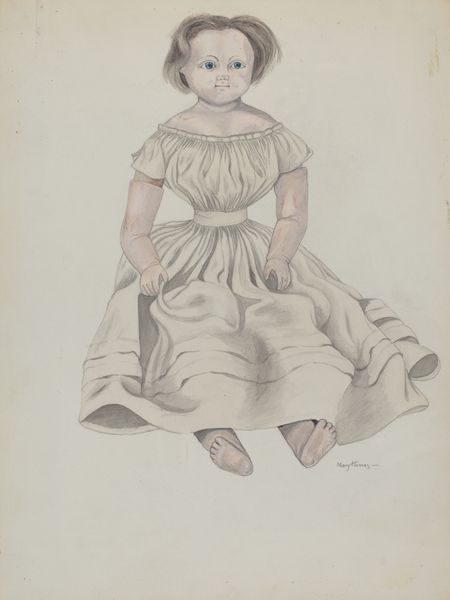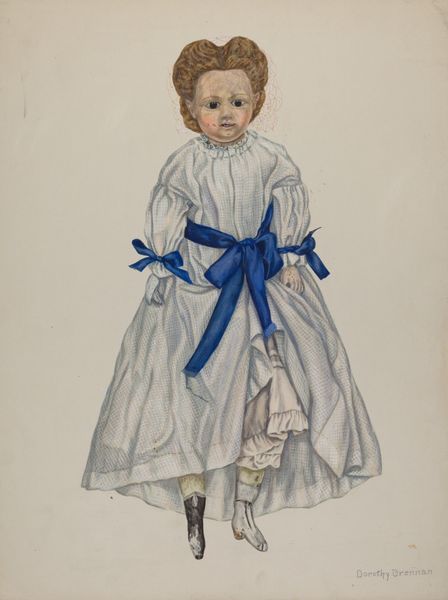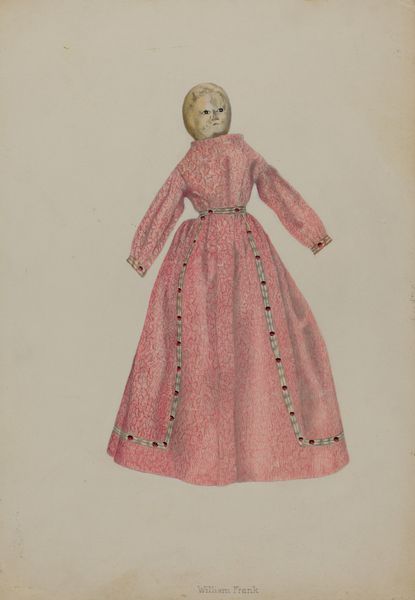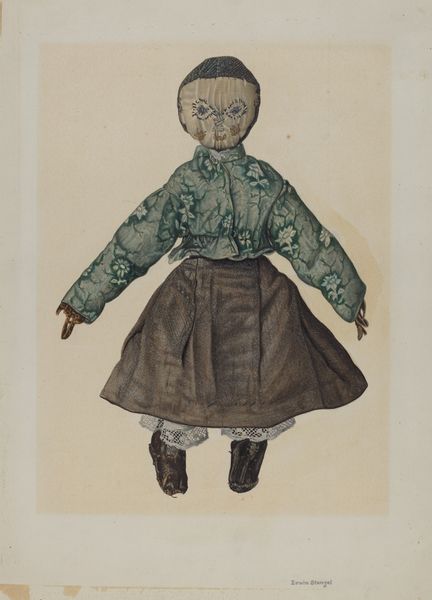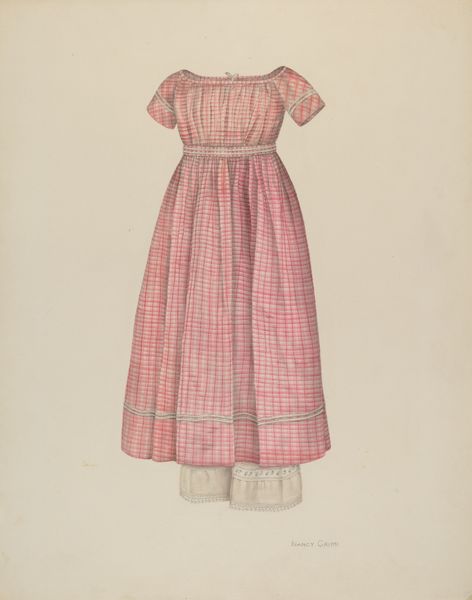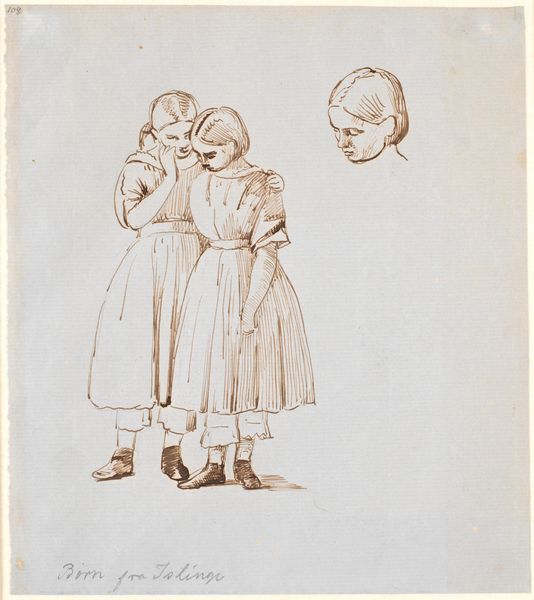
drawing, coloured-pencil, watercolor
#
portrait
#
drawing
#
coloured-pencil
#
figuration
#
watercolor
#
coloured pencil
#
watercolour illustration
Dimensions: overall: 50.6 x 38.2 cm (19 15/16 x 15 1/16 in.) Original IAD Object: 16 1/2" high; 4 1/2" wide
Copyright: National Gallery of Art: CC0 1.0
Editor: Here we have Eugene Croe’s “Doll - 'Grace'” from around 1938. It looks to be watercolour and coloured pencil, maybe a study for a doll design? The floating, disembodied doll heads give it a slightly unsettling feel despite the innocent subject matter. What do you make of it? Curator: The unsettling feeling you pick up on is interesting. Consider the 1930s; dolls often mirrored societal expectations of children, particularly girls. Their presentation—clothing, facial expressions— reinforced those expectations. Here, we see "Grace" depicted in triplicate, almost as a specimen under observation, and one of her expressions could be interpreted as unhappiness or distress. Editor: That’s a great point about the mirroring effect. Were dolls often displayed this way, as a study with different expressions? Curator: Not necessarily "displayed," but design drawings would have certainly been created to map out the aesthetics. It raises the question of who the intended audience was, and how the artist navigated marketing strategies. The choice of rendering three distinct emotional states for the doll also has sociopolitical underpinnings to do with performance expectations on gender and behaviour in girls, given the pressure girls often have to smile. Editor: So, it’s not just about aesthetics, but also about encoding specific roles. Were these dolls mass-produced, shaping norms for a broader public? Curator: Exactly. The drawing serves as a kind of map of childhood identity construction. It prompts us to investigate the impact of mass production on instilling values, norms, and gendered expectations in young girls. This also brings questions of who had access to dolls, and what gender representation the dolls supported or not. Editor: I hadn’t thought about it that way at all. It’s like this seemingly simple doll design opens up all these conversations about culture, gender, and the creation of norms! Curator: Precisely! By viewing it in its socio-historical context, and through institutional lenses we appreciate it's not just a rendering of a doll but a reflection of the forces shaping childhood itself.
Comments
No comments
Be the first to comment and join the conversation on the ultimate creative platform.
